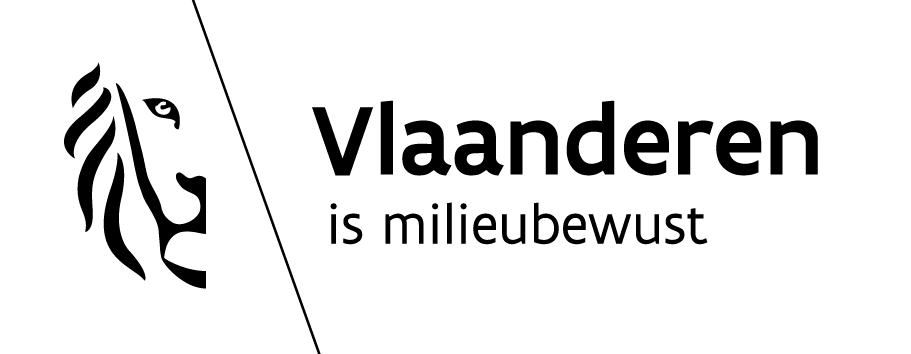Synonyms, abbreviations and/or process names
- Venturi scrubber
- Vortex scrubber
- Cyclone scrubber
Removed components
- Dust, particles: fine, sticky, hygroscopic
- Inorganic gaseous components
Diagram
Process description
A venturi scrubber consists of a converging section, a throat (the narrowest part of the venture tube) and a diffuser. The dust/gas mix flows through the venturi tube and reaches top speed in the throat section. Thereafter, the mixture passes into the diffuser where the speed drops again. Liquid is added to the gas flow either in the throat section or prior to it. Intensive mixing takes place between the gas and the liquid in the throat section of the venture tube. Due to the high speed realised by the gas and liquid, water is released in fine water droplets.
The venturi scrubber itself has a low volume. The dimensions of the installation are primarily determined by the droplet separator, which can be a few times larger than the scrubber.
Venturi scrubbers can be used to remove small particles (< 1 µm) from a gas stream. However, they can also be used for larger particles, though energy use is relatively high in such cases. Even at very high pressure drops, some types of dust cannot be separated. In some venturis it is possible to vary the width of the throat section, thus allowing the separator to be adjusted for varying flow volumes – thus retaining a high yield.
An L/G ratio of 5 to 13 m³ per 1 000 Nm³ can be used as a guideline figure.
Variants
In Vortex scrubbers the gas is passed tangentially into the cleaning chamber, the under-section of which is filled with water. The larger particles are separated via centrifugal force. The pre-cleaned gas then passes through the venturi, where the fine particles are scrubbed via intensive contact with water. The particles will remain in the liquid and will sediment in the bottom section of the cleaning chamber. The sludge in the cleaning chamber can be removed using a scraper or other mechanism. The cleaned gases leave the cleaning chamber via a droplet separator.
Efficiency
Venturi scrubbers have a high yield (70 to 99%), which is determined by particle distribution .
Boundary conditions
- Flow rate: 720 -100 000 Nm3/h
- Temperature: 4 -1 000 °C
- In-coming concentrations: 1 -115 g/Nm3
Auxiliary materials
Water
Environmental aspects
Waste water must be treated or discharged into the sewer network.
Residues which must be dewatered and disposed of.
Energy use
Energy use varies between 0.7 to 7 kWh per 1 000 m3 [1, 2]
Cost aspects
- Investment
- Investment costs for a to-be-treated gas stream of 10 000 Nm3/h amount to 5 000 – 7 000 EUR per 1000 Nm3/h. For other capacities, this must be multiplied with a scale-up factor to the power of 0.3 [1, 2, 5]
- Operating costs
- Personnel costs: ca. 0.25 mh/day [6]
- Operational costs: 0.4 – 0.5 EUR per 1 000 Nm³ [5]
- Auxiliary and residual materials: The separated dust must be dewatered and disposed of. The water must be treated prior to being discharged. Transport costs for the separated dust are determined by the type of residue.
- Inert: ca. 75 EUR/ton
- Chemical: 150 – 250 EUR/ton
Case study 1: Scrubbing dust and organic components in the chemical sector (1994)
- Flow rate: 10 000 Nm³/h
- Gas temperature: Room temperature to max. 60 °C
- Investment costs: 51 500 EUR for pump, venturi, separating drum / 7 900 EUR for ventilator
- Operating costs: 9 440 EUR/year electricity costs
Case study 2: Chemical sector (2003)
- Flow rate: 7,000 Nm³/h
- Gas temperature: Room temperature to max. 110 °C
- Investment costs: 63,400 EUR for pump, venturi, separating drum and ventilator
- Operating costs: 4,046 EUR/year electricity costs
Advantages and disadvantages
Advantages
- Relatively low maintenance
- High removal yield
- Simple and compact construction
- No mechanical components
- Gaseous components are absorbed
- Able to deal with fluctuating gas flows
- No ventilator required
Disadvantages
- Large pressure drops
- Signs of erosion when scrubbing abrasive mediums
Applications
The venturi scrubber is also used as a cooler to quench hot flue gases (up to 1000 °C).
Venturi scrubbers are used in a variety of settings, including:
- The chemical industry, to separate dust and aerosols;
- The metal industry for various types of waste gases;
- Waste incineration installations;
- Gasification processes;
- Potato-processing industry for the removal of starch;
- Glass industry;
- Melting processes in metallurgy;
- Foundries;
- Sintering processes;
- Drying processes;
- Fertiliser production;
- Pharmaceutical industry;
- Plastics industry.
References
- Factsheets on Air-emission reduction techniques, www.infomil.nl, Infomil
- Common waste water and waste gas treatment and management systems in the chemical sector. BREF document, European IPPC Bureau, http://eippcb.jrc.es
- Elslander H., De Fré R., Geuzens P., Wevers M. (1993). Comparative evaluation of possible gas purification systems for the combustion of household waste. In: Energie & Milieu, 9
- Work-book on environmental measures: Metal and electro-technical industry (1998 ). VNG publishers
- Supplier information
- User info
- VDI 3679, Nassabscheider für Partikelförmige Stoffe

